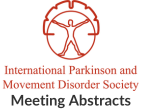Transition among HD-ISS stages as an endpoint in clinical trials for HD
Objective: Investigate the time to the event of HD-ISS Stage 3 transition (functional change) as an endpoint for clinical trials in Huntington’s disease (HD) and…Whole exome sequencing of 67 Swedish Parkinson patients identifies a family with VPS35 D620N
Objective: To determine the usefulness of WES in the diagnostic evaluation of Parkinson’s disease (PD) patients and to set up computational pathways for the identification…RNF216–associated neurodegeneration: Is it a new NBIA disorder?
Objective: To describe certain unique clinical and imaging features in a patient with RNF216-associated neuro degeneration (RNF216-AN) Background: RNF216-AN, known as Gordon Holmes syndrome is…Functional brain network alterations in the prodromal phase of X-linked dystonia-parkinsonism
Objective: To determine whether functional connectivity changes are already present in non-manifesting carriers (NMCs) of the TAF1 gene mutation causing X-linked dystonia-parkinsonism (XDP). Background: XDP…Dopamine-responsive x-linked parkinsonism-epilepsy due to phosphoglycerate kinase-1 deficiency
Objective: To describe the phenotype of three siblings with early-onset parkinsonism and epilepsy due to an x-linked phosphoglycerate kinase 1 deficiency, expanding our understanding of…Impacts of mutations in Parkinson’s disease-related genes on telomere maintenance
Objective: To investigate the correlation between telomere length (TL) and Parkinson’s disease (PD), and whether the change in telomere biology participates in PD pathogenesis. Background:…Altered cognitive control processes in the prodromal phase of X-linked dystonia-parkinsonism (XDP)
Objective: Investigating non-manifesting carriers (NMC) of the TAF1 gene mutation causing X-linked dystonia-parkinsonism to reveal a potential change in the neural basis of cognitive control processes during…Impaired Nt-acetylation and the Golgi, a new disease mechanism leading to autosomal recessive primary familial brain calcifications
Objective: To identify new disease-gene in unsolved autosomal recessive primary familial brain calcifications. Background: Primary familial brain calcification (PFBC) is characterized by calcium deposition in the brain,…Hereditary spastic paraplegia type 4 (SPG4): an international multicenter clinical and genetic study
Objective: To describe the epidemiological, clinical, and genetic features of patients affected by hereditary spastic paraplegia (HSP) in an international cohort of affected individuals.To describe…Autosomal dominant Parkinson’s disease caused by SNCA p.E46K variant in family with Russian ancestry: A case report
Objective: To report a family with autosomal dominant Parkinson’s disease (PD) with SNCA p.E46K variant. Background: Alpha-synuclein, encoded by SNCA, is a part of Lewy…
- « Previous Page
- 1
- 2
- 3
- 4
- 5
- …
- 15
- Next Page »
